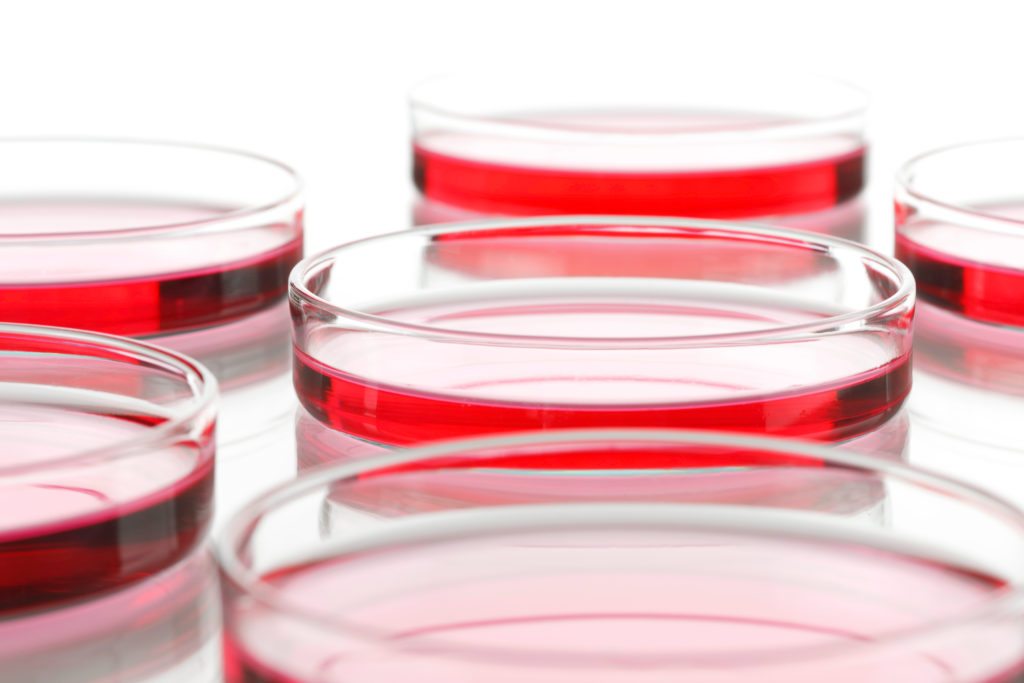Researchers Create a Stem Cell Line to Study Alagille Syndrome
Researchers Create a Stem Cell Line to Study Alagille Syndrome https://pediatricsnationwide.org/wp-content/uploads/2021/10/iStock_000014186415XLarge-1024x683.jpg 1024 683 Mary Bates, PhD Mary Bates, PhD https://secure.gravatar.com/avatar/c6233ca2b7754ab7c4c820e14eb518c8?s=96&d=mm&r=g- January 03, 2024
- Mary Bates, PhD

The patient-derived iPSCs have a mutation affecting the Notch signaling pathway.
Researchers at Nationwide Children’s have developed an induced pluripotent stem cell (iPSC) line derived from a patient with Alagille syndrome, a multisystem genetic disease. Like the majority of patients with Alagille syndrome, the stem cells have a pathogenic mutation in the JAG1 gene, part of the Notch signaling pathway. An initial characterization of the iPSC line was published in the journal Stem Cell Research.
Alagille syndrome is an autosomal dominant disease that affects numerous body systems including the liver, heart, blood vessels, and other organs. About 95% of children with Alagille syndrome have a mutation in the JAG1 gene that encodes Jagged1, a ligand that binds to Notch receptors.
“My interest is in understanding why patients with Alagille syndrome have these vascular defects and how mutations in the Notch signaling pathway give rise to those defects,” says Brenda Lilly, PhD, a principal investigator for the Center for Cardiovascular Research at Nationwide Children’s and senior author of the paper.
Dr. Lilly collaborated with Nationwide Children’s colleagues Vidu Garg, MD, director of the Center for Cardiovascular Research, and Mingtao Zhao, DVM, PhD, who is also a principal investigator in the center. The team collected blood from a patient with Alagille syndrome resulting from a JAG1 mutation and reprogrammed them into iPSCs — cells that have the potential to be differentiated into any cell type in the body.
“Our plan is to differentiate these iPSCs into the two main cell types of a blood vessel, endothelial cells and smooth muscle cells,” says Dr. Lilly. “Then we want to study these cells as they communicate, proliferate, migrate, and form blood vessels, and compare their function to that of control cells.”
Dr. Lilly, who is also a professor at The Ohio State University College of Medicine, says that mouse models of Alagille syndrome exist, but they do not recapitulate the disease very well, particularly the cardiovascular defects.
“This new cell line really opens up the door for us to be able to study patients in a dish,” she says. “With iPSCs, we can specifically focus on vascular cells without any of the other organ system issues.”
The research team also hopes the cell line will help them understand the variability of severity in Alagille syndrome. It is currently not known why some patients have mild disease while others are more severe, but Dr. Lilly suspects that an individuals’ genetic background may play a role.
Finally, studies of the new cell line could contribute to a better mechanistic understanding of vascular problems in a wide variety of diseases.
“The Notch signaling pathway is essential for so many different processes during development and beyond,” says Dr. Lilly. “There is still a lot to learn about Notch signaling, in health and disease. Hopefully, we can apply what we learn from these cells derived from a patient with Alagille syndrome to other diseases that impact Notch pathways.”
Reference:
Cunningham D, Stanberry I, Ye S, Alonzo M, Zhao MT, Garg V, Lilly B. Generation of iPSC line NCHi012-A from a patient with Alagille syndrome and heterozygous pathogenic variant in the JAG1 gene. Stem Cell Res. 2023 Sep;71:103177. doi: 10.1016/j.scr.2023.103177. Epub 2023 Aug 1.
About the author
Mary a freelance science writer and blogger based in Boston. Her favorite topics include biology, psychology, neuroscience, ecology, and animal behavior. She has a BA in Biology-Psychology with a minor in English from Skidmore College in Saratoga Springs, NY, and a PhD from Brown University, where she researched bat echolocation and bullfrog chorusing.
-
Mary Bates, PhDhttps://pediatricsnationwide.org/author/mary-bates-phd/December 27, 2016
-
Mary Bates, PhDhttps://pediatricsnationwide.org/author/mary-bates-phd/
-
Mary Bates, PhDhttps://pediatricsnationwide.org/author/mary-bates-phd/
-
Mary Bates, PhDhttps://pediatricsnationwide.org/author/mary-bates-phd/
- Post Tags:
- Cardiology
- Genetics
- NOTCH1
- Stem Cells






